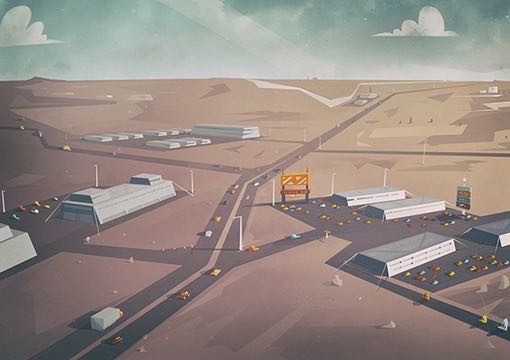3.3 Bright cities
The Earth’s albedo has a big effect on the energy received from the Sun. Cities, buildings and roads typically have low albedo – the tarmac, pitch and cement are dark so they absorb radiation very efficiently and keep urban areas warm.
This is called the urban heat island effect: it is so significant it distorts the global mean temperature record and increases human mortality and illness by making heatwaves more severe.
When weather stations are based outside cities, as the city expands to surround them, the extra heat adds more warming to the measured trend. Scientists assess these effects by comparing temperature changes in rural and urban stations, estimating that the urban heat island could affect the temperature record by up to 10% (IPCC, 2013).
Conversely, many weather stations were moved from urban areas out to airports in the 1940s–60s, so the earlier measurements have to be corrected downwards (Brohan et al., 2006). This is one of the most common large adjustments to land surface temperature records, and its effect is to increase estimates of past warming trends.
Instead of correcting the temperature data for the urban temperature difference, is it possible to try and correct it in the real world?
Consider the possibility of increasing the albedo of urban areas to reflect more solar radiation. Roof tops and road surfaces could be painted white, and structures and roads could be built using reflective materials. Could this method of brightening cities be enough to cool the whole planet?
Activity 4
a.
0.02%
b.
1.5%
c.
4%
d.
8%
The correct answer is b.
Answer
The answer is 1.5%. This may seem like a small percentage, but the total urban area of the Earth’s surface is only around 3%. So we would need to cover half of all urban surfaces with perfectly reflective mirrors – and not only every roof and road, but every garden, body of water, and any other object (cars, humans, cats…) – in order to compensate for a doubling of atmospheric CO2 concentrations.
Urban albedo has been estimated to have the potential to counteract up to 1.3% of a doubling of atmospheric CO2 concentrations globally (Lenton and Vaughan, 2009). But it can have a much larger local effect.
-
Considering the urban heat island effect, if cities were cooled by increasing their albedo, why would this reduce the human health impacts of global warming?
-
Cooling cities may reduce the need for air conditioning, which would reduce energy use.
These positive side effects are known as co-benefits. They make urban albedo a more appealing choice than it is for its potential to reduce global warming alone.
A third approach to reflecting solar radiation comes not from space or the surface, but from the sky.

